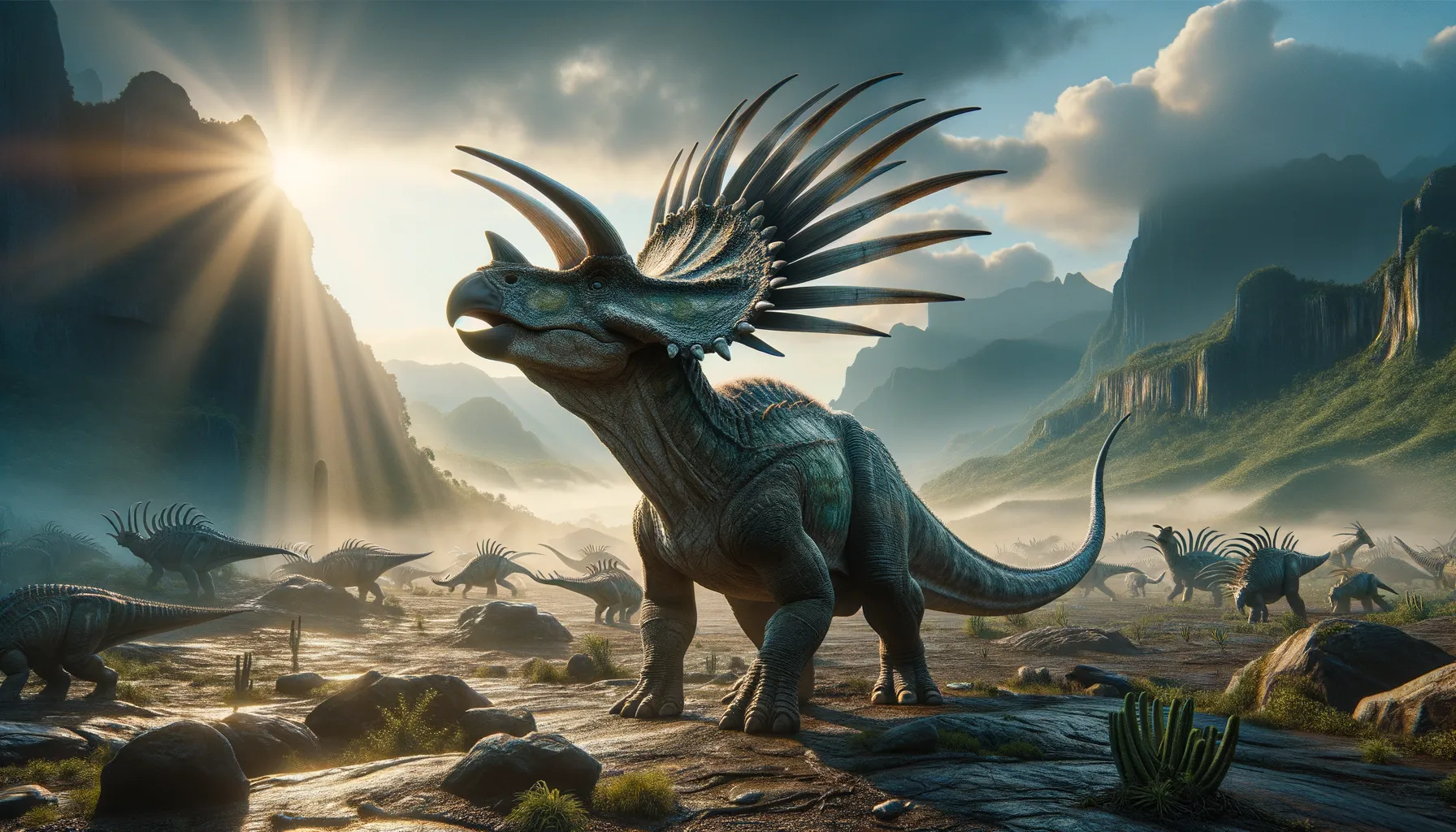
Ischioceratops
A small herbivore with a big impact.
Period
Cretaceous
Length
Roughly 13 to 15 feet long.
Height
Around 5 feet at the hip.
Weight
Approximately 1 to 2 tons.
Ischioceratops was a herbivorous dinosaur that roamed the Earth during the Late Cretaceous period. It belonged to the ceratopsian family, known for their distinct frills and beak-like mouths. Living in what is now Asia, it was a relatively small member of its family, adapted to a plant-based diet. Paleontologists have uncovered significant information about its lifestyle through fossil studies carried out primarily in Asia.
Diet
Ischioceratops fed primarily on vegetation, using its beak to clip off leaves and plant material. Its diet consisted mainly of ferns, cycads, and conifers, which were abundant during its time.
Hunting
As a herbivore, Ischioceratops did not hunt other animals for food. Instead, it may have moved slowly through its environment, carefully selecting plants to eat.
Environmental challenges
Ischioceratops faced environmental challenges such as finding sufficient food as vegetation types changed over time. It also had to contend with predators, requiring constant vigilance. Climate fluctuations would have affected the availability of food and water, posing additional challenges.
Speed
Slow-moving due to its large body size.
Lifespan
Estimated to be around 10-20 years.
First discovery
Found in the late 20th century in Inner Mongolia, China.
Fun Facts
- Ischioceratops was a dinosaur that lived during the Late Cretaceous period, about 80 million years ago.
- This dinosaur was a member of the ceratopsian family, famous for their frills and horns.
- Unlike some of its relatives, Ischioceratops had relatively small horns and a modest frill.
- Ischioceratops was a herbivore, feeding on plants and vegetation available during its time.
- Fossils of Ischioceratops were first discovered in the Liaoning Province of China.
- The name 'Ischioceratops' means 'ischium horned face', referring to a part of its pelvic structure.
- Ischioceratops might have weighed around 1,000 pounds, making it a medium-sized dinosaur in its group.
Growth and Development
Young Ischioceratops would have been vulnerable to predators, relying on growth and hardening of their frills for protection. Their development involved slow growth compared to some other herbivores, reaching full size over several years.
Habitat
Ischioceratops inhabited forested regions with abundant plant life. These areas provided shelter and food, crucial for their survival. The climate of its habitat was relatively humid, supporting diverse flora.
Interaction with other species
Ischioceratops likely interacted with other herbivores, often competing for the same food resources. It may have also formed herds for protection against predators. Their presence could have influenced the plant communities in their habitat.
Natural lifespan
In favorable conditions, they could live up to two decades.
Reproduction
Ischioceratops likely laid eggs, with females possibly building nests in protected areas. Parental care, if exhibited, might include guarding nests from predators and maintaining favorable conditions for incubation.
Social behaviour
Ischioceratops might have exhibited some degree of social behavior, potentially forming small groups or herds. This social structure could have offered protection from predators and facilitated communal foraging.
Fossil locations
Fossils of Ischioceratops have primarily been found in Inner Mongolia, providing valuable insights into its existence. These discoveries have contributed significantly to understanding Late Cretaceous ecosystems in Asia.
